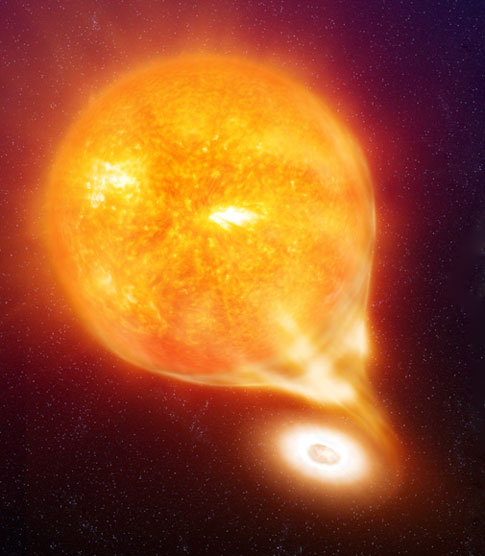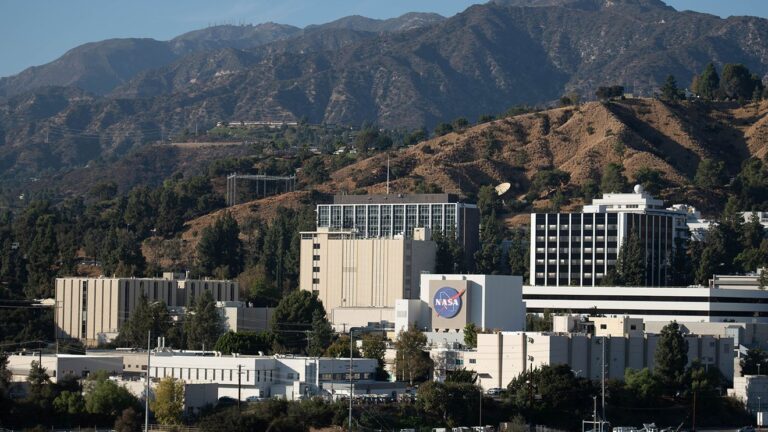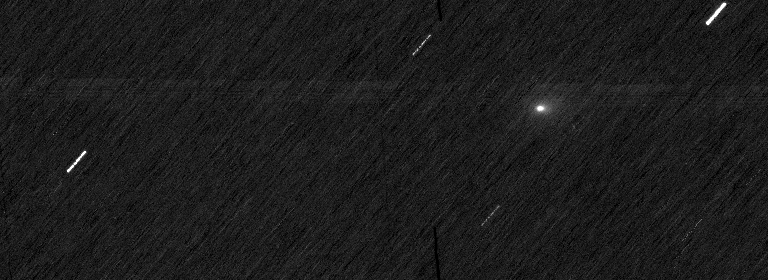Key Takeaways:
A unique set of observations, obtained with ESO’s Very Large Telescope (VLT), led to the discovery of direct evidence for material that surrounded a star before it exploded as a Type Ia supernova. The data support the scenario in which the explosion occurred in a system where a white dwarf is fed by a red giant.
Because Type Ia supernovae are extremely luminous and similar to one another, they have been used extensively as cosmological references to trace the Universe’s expansion.
However, despite recent significant progress, the nature of the exploding stars and their governing physics have remained very poorly understood.
In the most widely accepted models of Type Ia supernovae, the pre-explosion white dwarf orbits another star. Due to the close interaction and the strong attraction produced by the very compact object, the companion star continuously loses mass, “feeding” the white dwarf. When the mass of the white dwarf exceeds a critical value, it explodes.
A team of astronomers studied in great detail SN 2006X, a Type Ia supernova that exploded 70 million light-years away in spiral galaxy Messier 100. Their observations led them to discover the signatures of matter lost by the normal star, some of which is transferred to the white dwarf.
The observations were made with the Ultraviolet and Visual Echelle Spectrograph (UVES), mounted at ESO’s 8.2-meter VLT, on four different occasions over four months. A fifth observation at a different time was secured with the Keck telescope in Hawaii. The astronomers also used radio data obtained with NRAO’s Very Large Array as well as images extracted from the NASA/ESA Hubble Space Telescope archive.
“No Type Ia supernova has ever been observed at this level of detail for more than four months after the explosion,” says Ferdinando Patat, lead author of the paper reporting the results.
The most remarkable findings are changes in the absorption of material ejected from the companion giant star. Such changes of interstellar material, never observed before, demonstrate the effects a supernova explosion can have on its immediate environment.
“The material we have uncovered probably lies in a series of shells having a radius of the order of 0.05 light-years, or roughly 3,000 times the distance between Earth and the Sun,” explains Patat. “The material is moving with a velocity of 50 km/s, implying that the material would have been ejected some 50 years before the explosion.”
Such a velocity is typical for the winds of red giants. The system that exploded was thus most likely composed of a white dwarf that acted as a giant “vacuum cleaner,” drawing gas off its red giant companion. In this case however, the cannibal act proved fatal for the white dwarf. This is the first time that clear and direct evidence for material surrounding the explosion has been found.
“One crucial issue is whether what we have seen in SN 2006X represents the rule or is rather an exceptional case,” wonders Patat. “But given that this supernova has shown no optical, UV and radio peculiarity whatsoever, we conclude that what we have witnessed for this object is a common feature among normal SN Ia. Nevertheless, only future observations will give us answers to the many new questions these observations have posed to us.”










